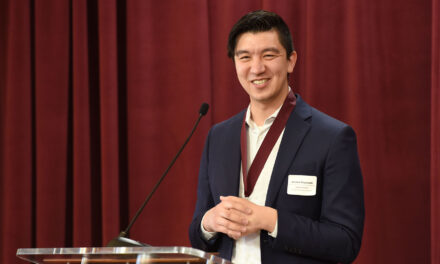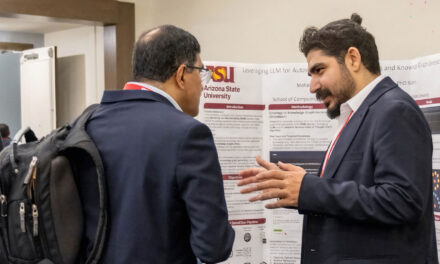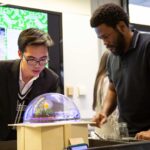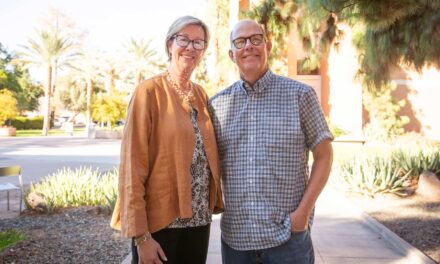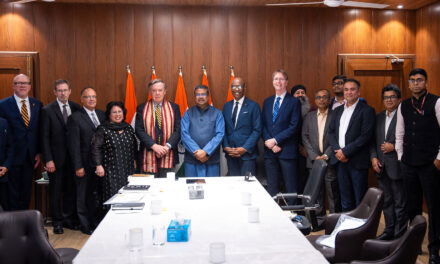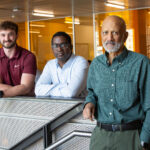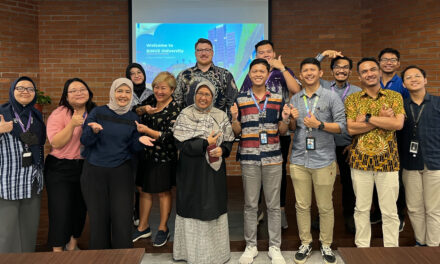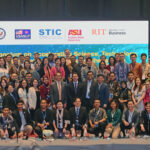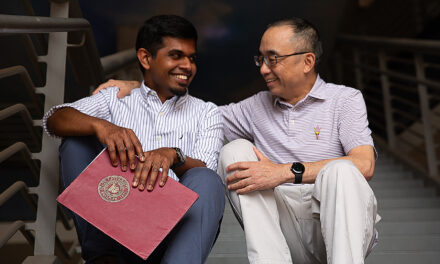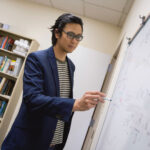
Enhancing solar energy harvesting by minimizing heat loss
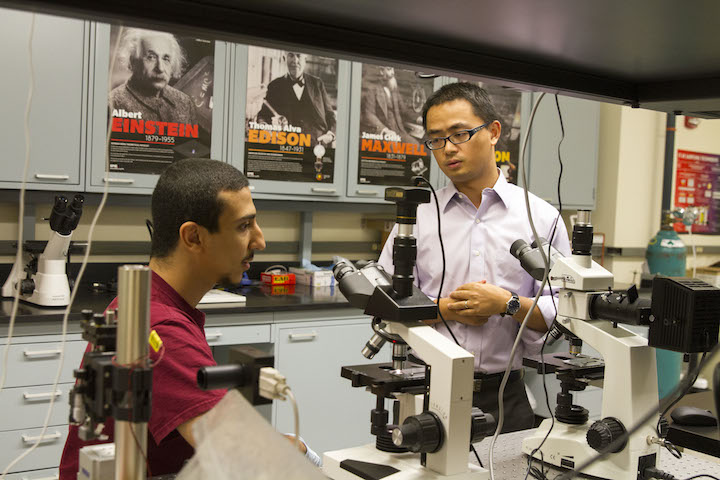
Above: Liping Wang, an assistant professor of mechanical engineering in the Ira A. Fulton Schools of Engineering, has earned a CAREER Award from the National Science Foundation for his work in novel nanomaterials. Photographer: Nora Skrodenis, ASU
Liping Wang and his students are designing and characterizing novel nano-engineering materials
The fast depleting reserves of conventional energy sources and ever changing environmental impacts have resulted in an urgent need for high-efficiency renewable energy sources and energy saving materials.
Liping Wang, an assistant professor of mechanical engineering in the Ira A. Fulton Schools of Engineering, is tackling this challenge head on through his Nano-Engineered Thermal Radiation Lab.
His research primarily aims to selectively control thermal radiation for energy applications by fundamentally understanding and exploring novel physical mechanisms in nanoscale radiative transport with nanoengineered materials or so-called metamaterials.
“One of my main focuses—and that of my team of graduate and undergraduate students—is on enhancing solar energy harvesting and conversion, like solar to heat by minimizing thermal radiation, which causes energy loss,” Wang said.
The goal, he said, is to design materials that are nearly 100 percent efficient in their absorption of the right spectrum of sunlight with close-to-zero emissivity in the infrared. Thermal loss, he explained, happens at the longer wavelengths so the goal is to achieve “spectral selectivity” with nanoengineered materials.
Wang and his students are developing materials that will perform at higher temperatures, up to 700 degrees Celsius, at which more power can be potentially produced.
Wang, who has published more than 20 papers in peer-reviewed journals over the past three years at ASU, was this year granted a prestigious National Science Foundation Faculty Early Career Development Program (CAREER) award to advance his research, and that of his students.
The award is being used to engineer new materials with micro/nanoscale feature sizes comparable to or smaller than the wavelength of light. Wang’s lab is employing physics to improve the conversion efficiency of solar thermal, solar photovoltaic and solar thermophotovoltaic energy-harvesting applications.
“We are investigating the resonance behaviors that a nano-engineered material exhibits in response to external electromagnetic waves at visible, near-infrared and mid-infrared ranges for tailoring thermal radiation at will,” Wang said.
“Besides advancing the fundamental understanding in nanoscale radiative transfer, our home-built spectrometric platform enables the systematic study of radiative properties over a wide temperature range from -196 degrees Celsius to 1000 degrees Celsius,” he said. “This will provide unperceived spectrometric information from millimeter down to micrometer and nanometer scale, while the novel nanostructures with exotic radiative properties will be demonstrated for various applications in energy harvesting, thermal management, and optical data storage.”
Wang said what makes his lab distinct is that they can take their concepts all the way through the engineering process—they design and fabricate the materials, as well as develop the state-of-the-art instrumentation to characterize material properties, and thus optimize performance.
He said that, while proving the science is important, it is also important to lower the cost of production if the materials are ever going to get to market.
“Right now, nanofabrication is very expensive—about $100 per hour and it takes 24 hours to grow a 5 by 5 millimeter sample for testing,” he said. “We have to get that cost down to have a practical impact on solar systems.”
Wang’s CAREER program will ultimately lead to a wide range of civil, military, aerospace and industrial applications. The success of this project will ultimately lead to wide applications of energy harvesting to convert solar energy to heat and power, as well as energy savings by radiative cooling or heating using “smart” coating materials.
Smart coatings, he explained, could be laminated on building roofs or embedded in exterior material and would ideally radiate heat to cool in the summer or absorb more to heat the building in winter.
“You accomplish this by controlling the optical properties of the coating with tunable materials,” Wang said. “This type of technology could be used for space application as radiation is the only way to do thermal control for spacecraft and satellites to maintain power.”
“A smart coating could even be used to create clothing that would help heat or cool the human body for maintaining personal comfort and health in different environments,” he said.
Wang joined the ASU faculty in 2012. He received his doctoral degree in mechanical engineering with a focus on nanoscale radiative heat transfer from Georgia Institute of Technology. Wang is the lead principal investigator for ASU’s participation in the U.S.-Australia Solar Energy Collaboration on Micro Urban Solar Integrated Concentrator project, sponsored by Australian Renewable Energy Agency.
Media Contact
Gary Campbell, [email protected]
480-965-9248
Ira A. Fulton Schools of Engineering


